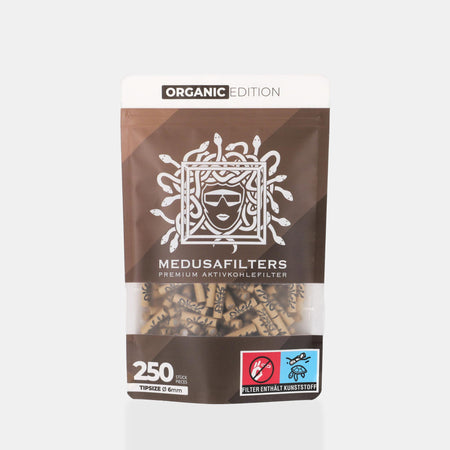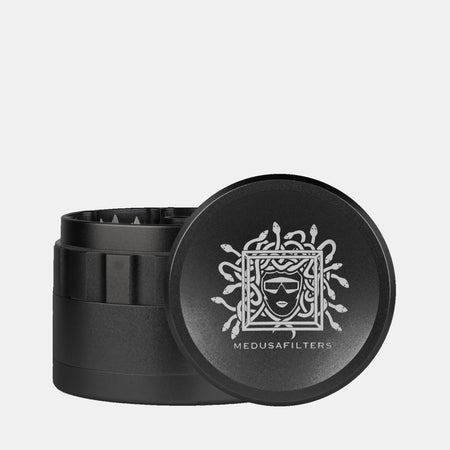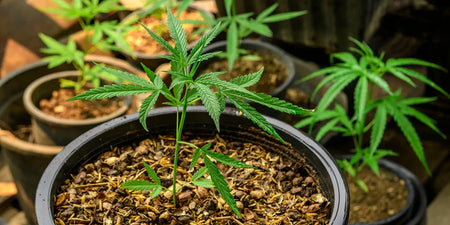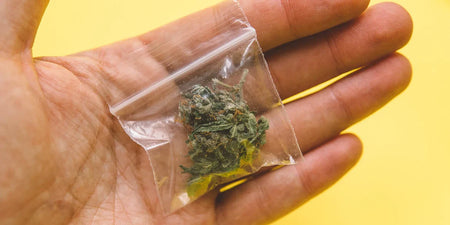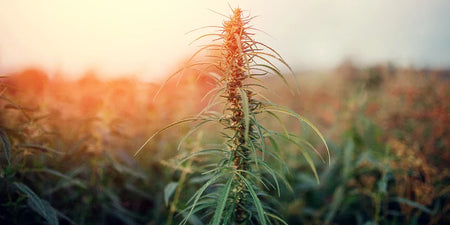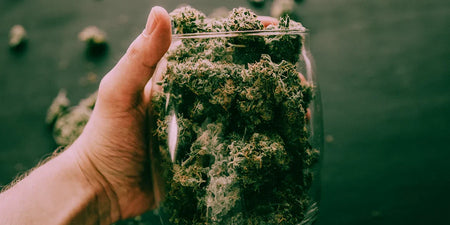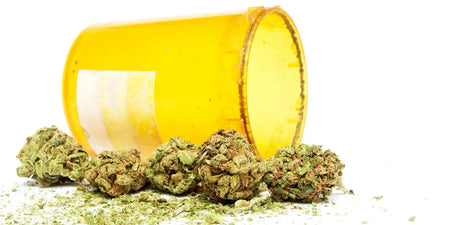The cannabis plant - Everything you need to know about hemp
The cannabis plant, commonly known as the hemp plant, has its roots in the areas of Central Asia, particularly the Himalayan and Hindu Kush regions. These regions, which include parts of modern countries such as India, Pakistan, Afghanistan and Nepal, are home to the original wild forms of the cannabis plant, known as Cannabis sativa subsp. indica and Cannabis sativa subsp. Afghanistan can be classified.
The history of the cannabis plant dates back thousands of years, and its connection to human culture is deep and diverse. Even in ancient times, various cultures recognized the versatility of this plant and began to cultivate it. People discovered the numerous uses of cannabis, ranging from making ropes and textiles to using its psychoactive properties for ritual, medicinal and recreational purposes [1]. The plant reached different parts of the world due to trade, migration and colonial expeditions. In some regions it became an important agricultural product and an essential part of economic and cultural identity. Today, cannabis, also known as marijuana, is grown all over the world, in different climates and geographical regions. Numerous varieties and subspecies have been developed to suit the specific conditions and requirements in different parts of the world. This plant has a long and rich history of human use and cultivation and remains an important crop in many areas [1]. From the medical use of cannabinoids such as CBD and THC to the industrial use of hemp fiber and seeds, the cannabis plant has had a lasting impact on human society [1].
The most important thing about the cannabis plant
Anatomy of the cannabis plant
Get to know the individual components of the cannabis plant and their functions.
Read moreThe life cycle of hemp plants
Learn more about the three main phases of the cannabis plant life cycle.
Read moreNew regulations in Germany from April 2024:
From April 1, 2024, a new legal framework for dealing with cannabis will apply in Germany. This change will legalize the possession of up to 25 grams of cannabis for personal use and the cultivation of up to three cannabis plants. In addition, communal cultivation in so-called cannabis clubs will be possible under strict conditions. For further information, please visit the official website of the German Bundestag .
Anatomy of the cannabis plant
The anatomy of the cannabis plant is a fascinating and complex subject that provides a deep insight into the structure and function of this special plant. From roots to seeds, the cannabis plant has a variety of unique components, each of which plays a specific role in its health and growth [1].
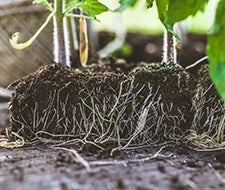
root
They reach deep into the soil and play a key role in nutrient absorption and water supply to the plant. Not only do they serve as anchors to anchor the plant firmly in the ground, but they also act as a vital interface between the plant and its substrate. The roots absorb water and nutrients from the soil, which are essential for the growth and development of the plant [1].
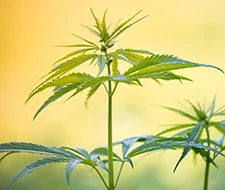
Stem
It is a versatile organ whose strength and flexibility can vary depending on the variety. The stem bears the leaves, which can come in various shapes and sizes and are crucial for photosynthesis. Sunlight is converted into chemical energy that is needed for plant growth. The leaves themselves are characteristic of each cannabis species and can have different patterns and characteristics that help with identification and classification [1].
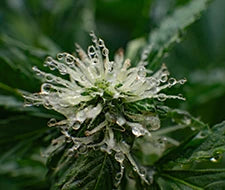
blossoms
They are particularly notable, especially in the female plants. They are the most productive parts of the plant when it comes to synthesizing cannabinoids such as THC and CBD [1]. These cannabinoids are known for their diverse effects on the human body, including therapeutic and psychoactive effects [1]. The female flowers bear the brunt of cannabinoid production and are therefore of greatest interest to medicinal and recreational growers [1].
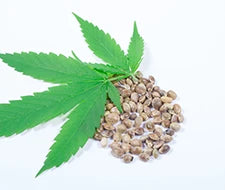
seeds
Not to be forgotten are the seeds of the cannabis plant, which are often overlooked. Hemp seeds carry the genetic material for the next generation of plants and are crucial for reproduction and breeding new varieties. The diversity of genetic information in seeds makes it possible to combine different characteristics and breed new variants [1].
The life cycle of hemp plants
The life cycle of the cannabis plant is an extremely complex process that consists of three main phases, namely the germination phase, the vegetative growth phase and the flowering phase [2]. These phases are of crucial importance for the entire development process of the plant and are closely related to various external environmental factors as well as the genetic makeup of the plant itself [2]. During the germination phase, the life of the cannabis plant unfolds from a tiny seed. In this phase, the seed develops a root and a shoot, which form the basis for future growth [2]. The quality of the soil and the right moisture are crucial here, as this supports the seed in the formation of its first roots [2]. The vegetative growth phase is a time of intense growth and concentration on building a strong stem and lush leaves [2]. The main goal in this phase is to develop a vigorous and resilient plant capable of utilizing maximum sunlight for photosynthesis [2]. The plant typically becomes larger and bushier during this time, preparing to develop flowers. The flowering phase marks the next moment in the cannabis plant's life cycle. In this phase, plants begin to produce flowers, which are responsible for producing cannabinoids such as THC and CBD. The duration and intensity of the flowering phase depend on the photoperiod, that is, the ratio of light and darkness [2]. This aspect can vary depending on the type of cannabis (indica, sativa, ruderalis) and the specific growing conditions [2]. Growers must precisely control lighting to determine the optimal time to harvest. The ability of the cannabis plant to adapt to different environmental conditions makes growing cannabis both a challenging and rewarding task for breeders and researchers alike [2].
Our products for your favorite plants
Difference between male and female hemp plants
Distinguishing between male and female crops is crucial when it comes to producing cannabinoid-rich flowers [2]. The two sexes have different functions and can contribute to the development and harvest of high-quality cannabis [2]. Male hemp plants are primarily responsible for producing pollen. Their main purpose is to pollinate female plants to enable reproduction [2]. The pollen produced by the male plants contains the male sex cells and is transported to the female flowers by the wind or insects. Once pollination has occurred, the female plants begin producing seeds. These female plants produce dense, resin-rich flowers rich in cannabinoids such as THC and CBD [2]. The non-pollinated, female cannabis plants do not produce seeds, but instead focus on producing cannabinoids and resin [2].
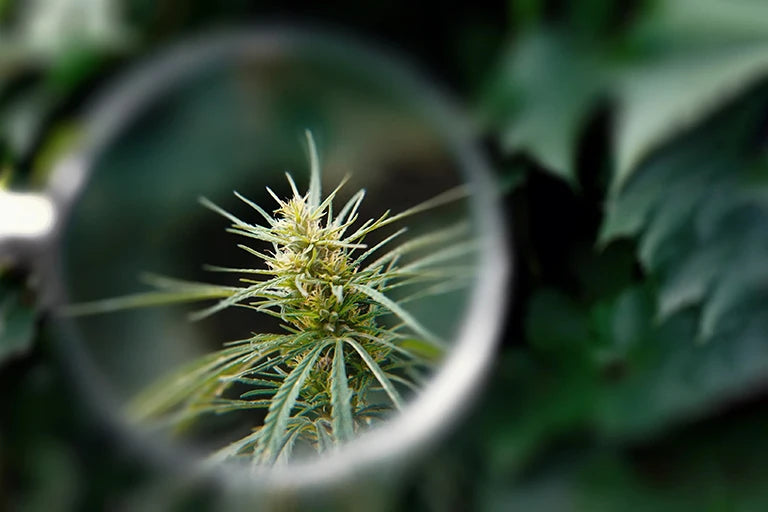
Can you grow hemp?
The cultivation of cannabis is possible under certain conditions and is legalized in some countries and regions [3]. Successful cultivation requires a deep understanding of plant biology, life cycle, and specific requirements of cannabis plants. Factors such as light, water, nutrients and ambient temperature are crucial [3]. One of the most important considerations when growing cannabis is paying attention to the difference between male and female plants. Female plants are typically the ones that produce high-quality cannabinoid-rich flowers, while male plants primarily produce pollen and serve to pollinate female plants [2]. Selecting appropriate strains, including Cannabis Indica, Sativa and hybrid strains, is also important [3]. Each variety has its own growth characteristics, effects and requirements [3]. Choosing the right strain depends on the goals of cultivation, be it for medical cannabis, recreational use as an intoxicant, or industrial applications [3]. In addition, cannabis plants must receive optimal conditions for light, water and nutrients [3].
Overall, successfully growing cannabis is a challenging task that requires expertise and care [3]. Compliance with local laws and regulations regarding cannabis cultivation is also of utmost importance.
You can find out more about cannabis here
Frequently asked questions about cannabis
The cannabis plant, also known as hemp, has its origins in the areas of Central Asia, particularly the Himalayas and Hindu Kush. The original wild forms of the plant can be found there, classified as Cannabis sativa subsp. indica and Cannabis sativa subsp. afghanica.
The history of cannabis goes back thousands of years and is closely linked to human culture. Already in ancient times, various cultures recognized the versatility of this plant. It was used for the production of ropes, textiles and medicine and had ritual and recreational purposes.
The cannabis plant consists of roots, stems, leaves, flowers and seeds. The roots absorb water and nutrients from the soil. The stems bear the leaves, which are important for photosynthesis. The flowers are rich in cannabinoids like THC and CBD, while the seeds contain the genetic material for the next generation.
Growing cannabis is possible under certain conditions and is legalized in some countries. However, it requires a deep understanding of plant biology and the specific requirements of cannabis plants. Light, water, nutrients and ambient temperature are important factors. It is also important to distinguish between male and female plants, as only the female plants produce cannabinoid-rich flowers.
Sources
[1] CBD deal
[2] Drugcom
[3] Barmer








































